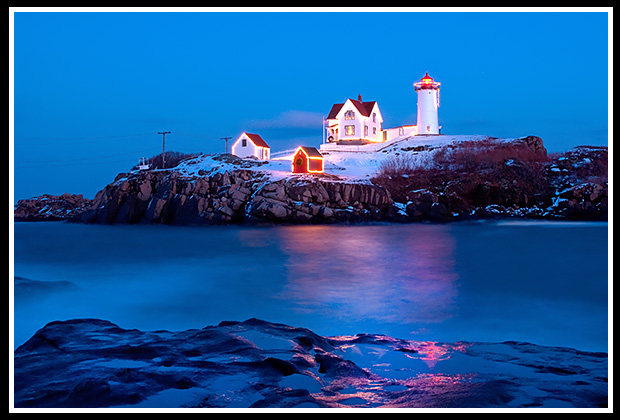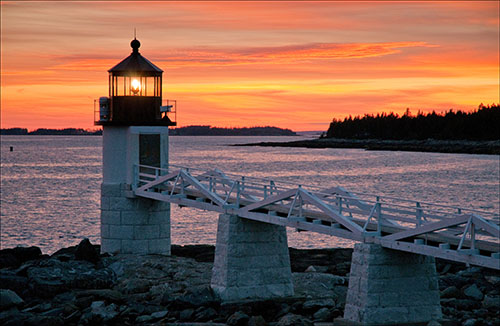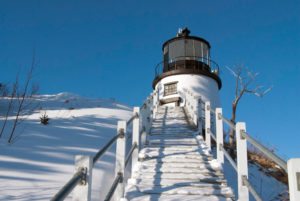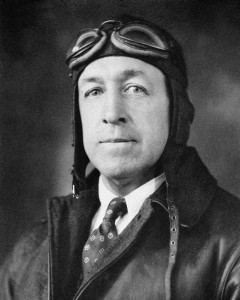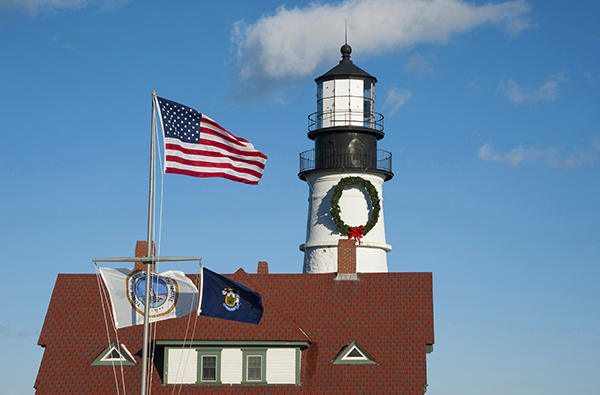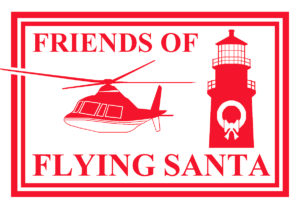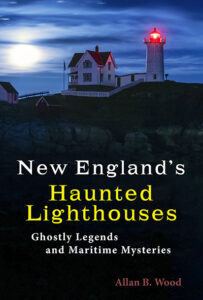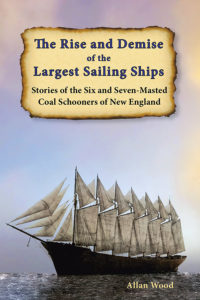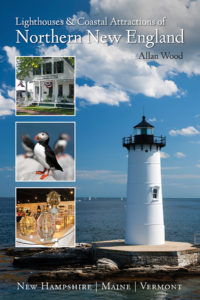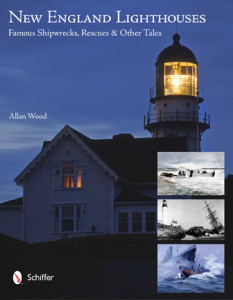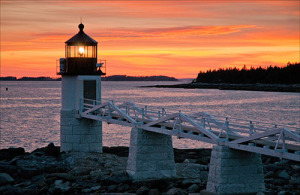The Flying Santas of Maine Who Rescued Lighthouse Keepers
Lighthouse keepers would risk their lives to rescue those stranded on merchant vessels or local mariners caught in New England’s unpredictable storms. Most of their time was spent performing the arduous and mundane tasks of maintaining the light stations they were assigned to manage. It was an incredibly lonely and desolate life, not only for themselves but for their families as well. Holidays were challenging emotionally, especially for those stationed off the mainland, on islands, or on dangerous reefs, as most lighthouses in New England were stationed. Sometimes, they needed an “emotional rescue.”
Captain William Wincapaw, the Original Flying Santa
In the late 1920s, the concept of a “flying Santa” to bring gifts and supplies to lighthouse keepers and their families was the brainchild of a native of Friendship, Maine, Captain William Wincapaw. He was known in the region as an excellent pilot who was directly involved in saving the lives of islanders of Penobscot Bay and would help transport those sick or injured to safety or nearby hospitals even in inclement weather. He navigated the region using the lighthouse beacons along the coastline in those days. He always appreciated the lighthouse keepers’ dedication to maintaining the lights, as they appreciated the Captain for his rescue efforts.
When time and weather allowed, Captain Wincapaw would land his plane at various light stations and spend some time with the keepers. With his admiration and respect for the keepers and their families, he decided in 1929 that on Christmas morning, he would load up his plane with a dozen packages of newspapers, magazines, coffee, candy, and other small luxuries for his isolated friends in the Rockland region of Maine. He completed the task and spent the rest of the day with his family. Word got around rather quickly of this saintly gesture, and he was so surprised by the outpouring of thanks from the keepers and the locals that he decided to make the venture each year, increasing his range to additional stations along the coast.
Each year, the “Flying Santa” flights, as the locals called them, continued and expanded to the rest of New England’s coastline. Captain Wincapaw decided to play the role of Santa by dressing up in costume as he would deliver his gifts. Four years later, by 1933, they delivered presents to 91 lighthouses and Coast Guard stations along New England. In 1934, his 16-year-old son Bill Jr. became one of the youngest licensed pilots in Massachusetts, where the family had recently moved to, and also became an excellent pilot under the direction of his father. That Christmas, he joined in helping his father continue the tradition, and in 1935, he would fly solo to some of the stations.
As the tradition grew, in 1936, Bill Jr. introduced his father to one of his teachers at Winthrop High School, Edward Rowe Snow, a lighthouse enthusiast and New England maritime historian. Captain Wincapaw immediately liked Snow, who wanted to help in Wincapaw’s efforts. He arranged to have Snow assist his son in delivering the gifts to stations in southern New England. Snow proved a valuable asset for the Captain and his son. He occasionally took over the duties in the late 1930s when the duo was stationed to work in South America during the holiday season. Snow was not a pilot but would spend money to hire one, lean out, and drop off the gifts.
On July 16, 1947, as Captain Wincapaw was taking off from Rockland harbor with a passenger, Robert Muckenhirn, he suffered a heart attack in the air, and the plane crashed in the ocean, killing both men. As the memorial service began on the afternoon of the 19th, keepers sounded foghorns and bells that would be heard across Penobscot Bay in respect for the original lighthouse flying Santa. Many keepers, their families, and islanders attended the service in gratitude for his services. Snow would drop a memorial wreath in Rockland Harbor that December to honor his close friend.
The Flying Santa Tradition Continues
After the death of Captain Wincapaw, historian Edward Rowe Snow continued to carry on the tradition of delivering Christmas bundles to stations all along the Eastern Coastline and then cross country. Over the years, during many of the flights, Snow would still hire a pilot out of his pay, and he and his wife would enjoy the satisfaction of their efforts as repayment, with help from their daughter in making it a family affair. Aircraft were provided by local agencies, and on a few excursions, the Coast Guard would provide Snow with one of their aircraft to help him with his expanding deliveries. Packages would continue to be provided by the many sponsors as Snow continued to write books about New England stories and lighthouses, which he would also provide for the keepers and their families. Snow continued the tradition until he died in the early 1980s. The Hull Lifesaving Museum in Massachusetts answered the call and continued the tradition of the Flying Santas. As years passed, other good Samaritans would follow Snow’s path and become Flying Santas. The tradition continues to remind communities of the sacrifices lighthouse keepers and their families made to protect mariners worldwide.
The Establishment of the Friends of Flying Santa
By 1997, the Flying Santa program was transferred from the Hull Lifesaving Museum to a non-profit group of volunteers calling themselves the Friends of Flying Santa. This non-profit organization would help to ensure a stable financial future by keeping the program alive and developing the official red logo to help with fundraising efforts on clothing and novelty items. The program continues today as a gesture of appreciation to the dedicated Coast Guard crews and their families. Now flying by helicopter, Santa’s route includes over 30 stops from Maine to New York.
Their website www.flyingsanta.org keeps the public informed of events and helps in their efforts to raise funds for this wonderful program. All money raised by this campaign goes directly to purchase gifts for the children. There are no paid staff or administrative fees. If you want to help or learn more about the organization or upcoming events year-round, visit the Friends of Flying Santa website.
Today, the Flying Santa comes down in a helicopter, calls out the names of the children in attendance, and presents them with a little gift to continue the annual tradition. This annual event is used today as a simple expression of gratitude for the work performed by the Coast Guard.
Happy Holidays,
Allan Wood
Books to Explore
New England’s Haunted Lighthouses:
Ghostly Legends and Maritime Mysteries
Discover the mysteries of New England’s haunted lighthouses! Uncover ghostly tales of lingering keepers, victims of misfortune or local shipwrecks, lost souls, ghost ships, and more. Many of these accounts begin with actual historical events that later lead to unexplained incidents.
Immerse yourself in the tales associated with these iconic beacons!
The Rise and Demise of the Largest Sailing Ships:
Stories of the Six and Seven-Masted Coal Schooners of New England.
In the early 1900s, New England shipbuilders constructed the world’s largest sailing ships amid social and political reforms. These giants were the ten original six-masted coal schooners and one colossal seven-masted vessel, built to carry massive quantities of coal and building supplies and measured longer than a football field! This self-published book, balanced with plenty of color and vintage images, showcases the historical accounts that followed these mighty ships.
Available also from bookstores in paperback, hardcover, and as an eBook for all devices.

Book – Lighthouses and Coastal Attractions in Southern New England: Connecticut, Rhode Island, Massachusetts
Lighthouses and Coastal Attractions of Southern New England:
Connecticut, Rhode Island, and Massachusetts.
This 300-page book provides memorable human interest stories from each of the 92 lighthouses. You can explore plenty of indoor and outdoor coastal attractions, including whale-watching excursions, lighthouse tours, windjammer sailing tours, parks, museums, and even lighthouses where you can stay overnight. You’ll also find plenty of stories of hauntings around lighthouses.
Lighthouses and Coastal Attractions of Northern New England:
New Hampshire, Maine, and Vermont.
This 300-page book provides memorable human interest stories from each of the 76 lighthouses, including the Flying Santas. It also describes and provides contact info for plenty of indoor and outdoor coastal attractions and tours. These include whale watching, lighthouse tours, unique parks, museums, and lighthouses where you can stay overnight. There are also stories of haunted lighthouses in these regions.
New England Lighthouses:
Famous Shipwrecks, Rescues & Other Tales
You’ll find more details about the Flying Santas. This image-rich book also contains vintage images provided by the Coast Guard and various organizations and paintings by six famous Coast Guard artists.
You can purchase this book and the lighthouse tourism books from the publisher Schiffer Books or in many fine bookstores such as Barnes and Noble.
Copyright © Allan Wood Photography; do not reproduce without permission. All rights reserved.
Join, Learn, and Support The American Lighthouse Foundation
